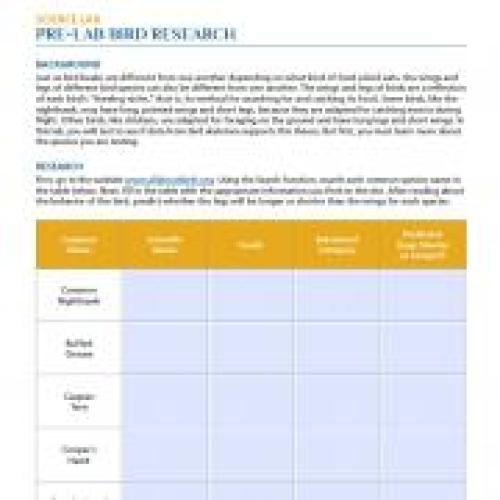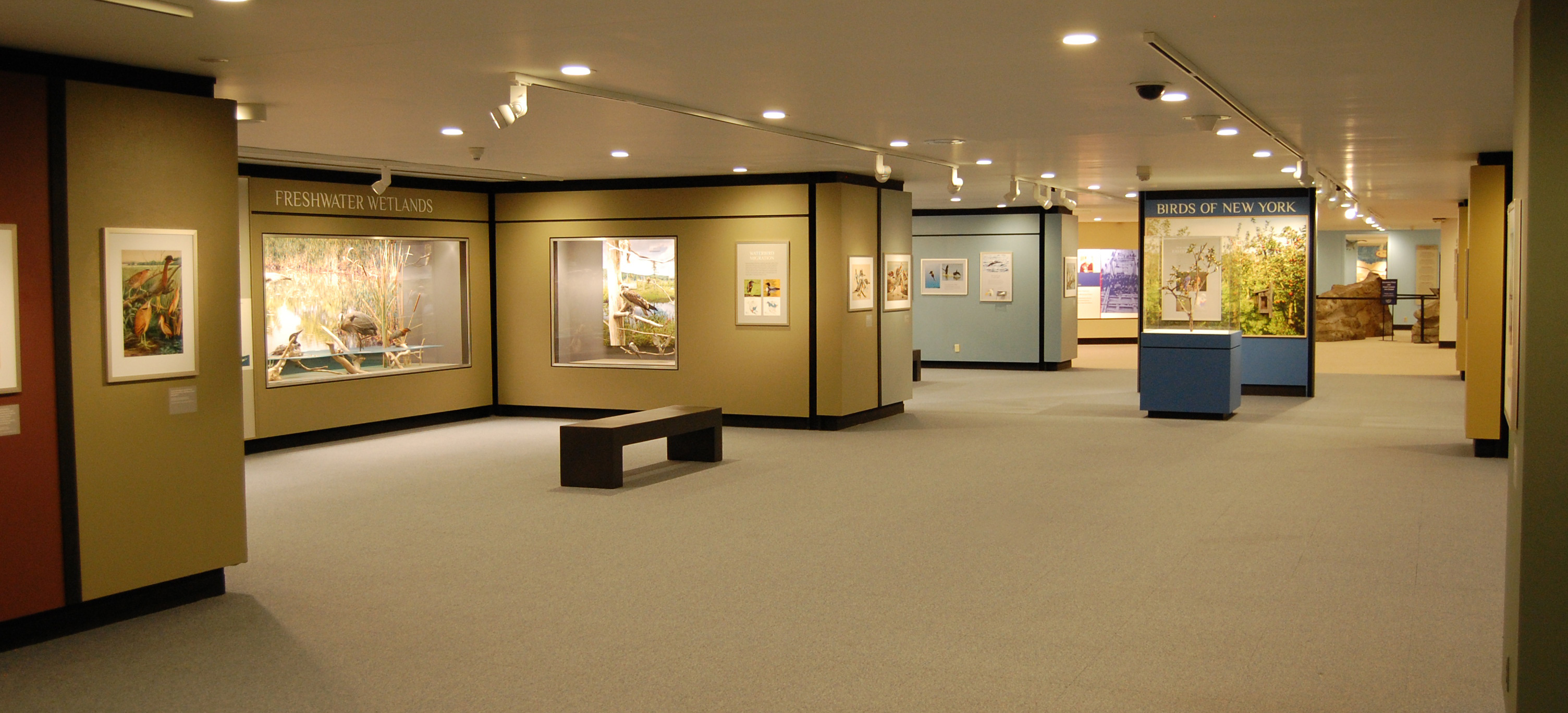Science Lab: Pre-lab Bird Research (PDF)

Just as bird beaks are different from one another depending on what kind of food a bird eats, the wings and legs of different bird species can also be different from one another. The wings and legs of birds are a refection of each bird’s “feeding niche,” that is, its method for searching for and catching its food. Some birds, like the nighthawk, may have long, pointed wings and short legs, because they are adapted for catching insects during fight. Other birds, like chickens, are adapted for foraging on the ground and have long legs and short wings. In this lab, you will test to see if data from bird skeletons supports this theory. But frst, you must learn more about the species you are testing.


